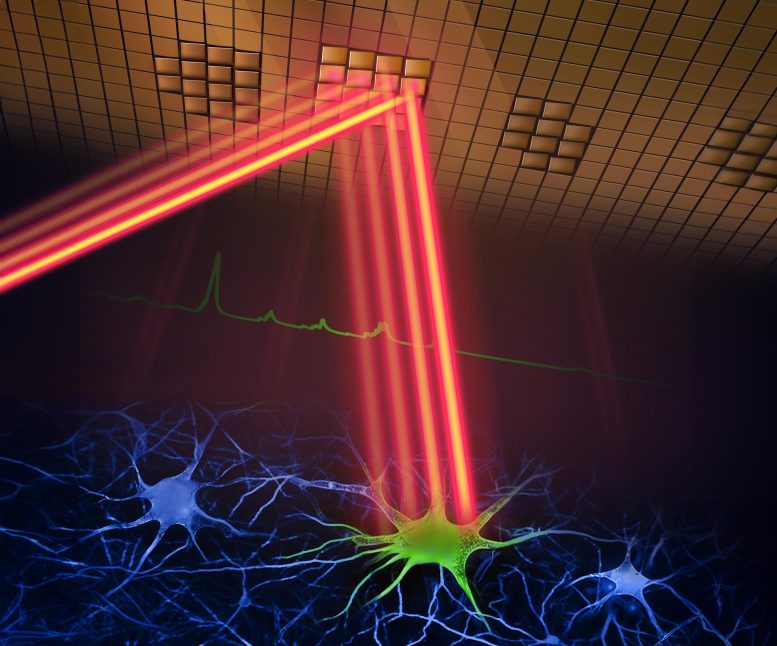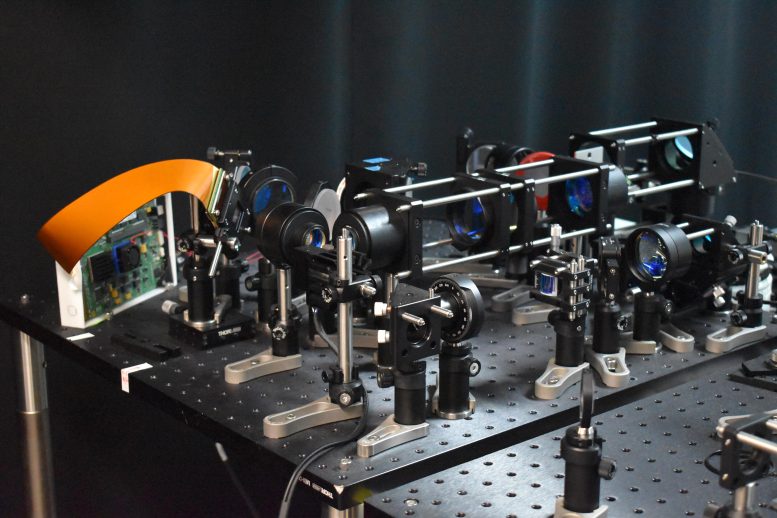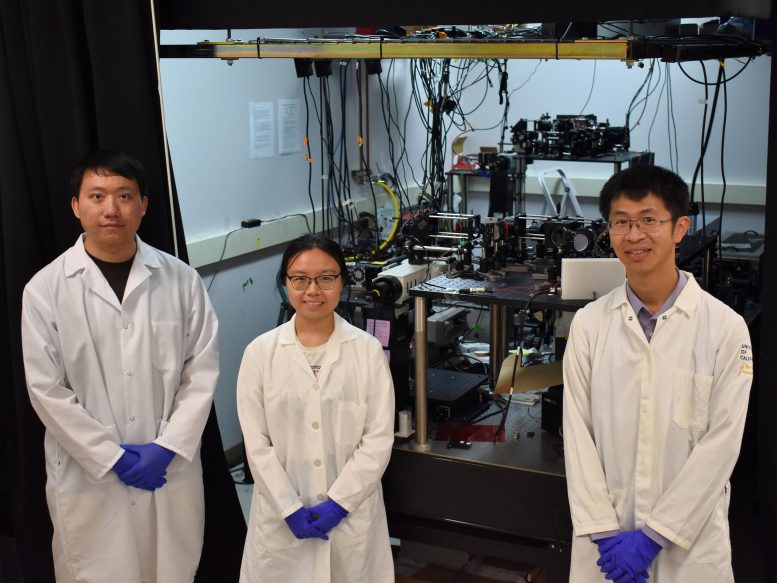
Researchers have developed a revolutionary two-photon fluorescence microscope that captures neural activity at high speed and cellular resolution, offering unprecedented insights into brain function.
This new approach, which images faster and with less harm to brain tissue than traditional methods, could transform our understanding of how neurons communicate in real-time, potentially leading to breakthroughs in treating neurological diseases like Alzheimer’s and Parkinson’s.
High-Speed Brain Imaging Breakthrough
Researchers have developed a new two-photon fluorescence microscope that captures high-speed images of neural activity at cellular resolution. By imaging much faster and with less harm to brain tissue than traditional two-photon microscopy, the new approach could provide a clearer view of how neurons communicate in real time, leading to new insights into brain function and neurological diseases.
In-vivo imaging of the neuronal activity in mouse primary visual cortex. Left, high-resolution neuronal map; middle, high-speed neuronal activity recording captured by the two-photon microscope with the adaptive line-excitation scheme; right, extracted neuronal activity traces of representative neurons. Credit: Shu Guo and Yunyang Li, University of California, Davis
Real-Time Neural Dynamics and Brain Function
“Our new microscope is ideally suited for studying the dynamics of neural networks in real-time, which is crucial for understanding fundamental brain functions such as learning, memory, and decision-making,” said research team leader Weijian Yang from the University of California, Davis. “For example, researchers could use it to observe neural activity during learning to better understand communication and interaction among different neurons during this process.”
In Optica, Optica Publishing Group’s journal for high-impact research, the researchers describe the new two-photon fluorescence microscope, which incorporates a new adaptive sampling scheme and replaces traditional point illumination with line illumination. They show that the new method enables in vivo imaging of neuronal activity in a mouse cortex and can image at speeds ten times faster than traditional two-photon microscopy while also reducing the laser power on the brain more than tenfold.

“By providing a tool that can observe neuronal activity in real-time, our technology could be used to study the pathology of diseases at the earliest stages,” said Yunyang Li, the first author of the paper. “This could help researchers better understand and more effectively treat neurological diseases such as Alzheimer’s, Parkinson’s and epilepsy.”
High-Speed Imaging With Less Damage
Two-photon microscopy can image deep into scattering tissue such as a mouse brain by scanning a small point of light across the entire sample area to excite fluorescence and then collecting the resulting signal point by point. This process is then repeated to capture each imaging frame. Although two-photon microscopy provides detailed images, it is slow and can damage brain tissue.
In the new work, the researchers aimed to overcome these limitations through a new sampling strategy. Rather than using a point of light, they use a short line of light to illuminate specific parts of the brain where neurons are active. This enables a larger area to be excited and imaged at once, thus speeding up the imaging process significantly. Also, because it only images neurons of interest — not the background or inactive areas — the total light energy deposited to the brain tissue is reduced, lowering the risk for potential damage. They called this scheme adaptive sampling.

Advanced Techniques for Targeted Imaging
The researchers accomplished this by using a digital micromirror device (DMD) — a chip containing thousands of tiny mirrors that can be individually controlled — to dynamically shape and steer the light beam, enabling precise targeting of active neurons. They achieved adaptive sampling by turning individual DMD pixels on and off in a way that adjusts to the neuronal structure of the brain tissue being imaged.
The researchers also developed a technique to use the DMD to mimic high-resolution point scanning. This allows a high-resolution image to be reconstructed from fast scans, providing a quick way to identify neuronal regions of interest. This is critical for the subsequent high-speed imaging with the short-line excitation and adaptive sampling scheme.
“These developments — each crucial on its own — come together to create a powerful imaging tool that significantly advances the ability to study dynamic neural processes in real-time, with reduced risk to living tissue,” said Yang. “Importantly, our technique can be combined with other techniques like beam multiplexing and remote focusing to further increase the imaging speed or to achieve volumetric 3D imaging.”
Capturing Neural Activity With Unprecedented Speed
The researchers demonstrated the new microscope by using it to image calcium signals — indicators of neural activity — in living mouse brain tissue. The system captured these signals at a speed of 198 Hz, which is significantly faster than traditional two-photon microscopes and demonstrates the ability to monitor rapid neuronal events that would be missed by slower imaging methods.
They also showed that the adaptive line-excitation technique coupled with advanced computational algorithms makes it possible to isolate the activity of individual neurons. This is important for accurately interpreting complex neural interactions and understanding the functional architecture of the brain.
Future Enhancements and Applications
Next, the researchers are working to integrate voltage imaging capabilities into the microscope to capture a direct and extremely rapid readout of neural activity. They also plan to use the new method for real neuroscience applications, such as observing neural activity during learning and studying brain activity in disease states. Additionally, they aim to improve the microscope’s user-friendliness and reduce its size to enhance its utility in neuroscience research.
Reference: “High-speed two-photon microscopy with adaptive line-excitation” by Yunyang Li, Ben Mattison, Junjie Hu, Kwun Nok Mimi Man, Shu Guo and Weijian Yang, 19 August 2024, Optica.
DOI: doi:10.1364/OPTICA.529930